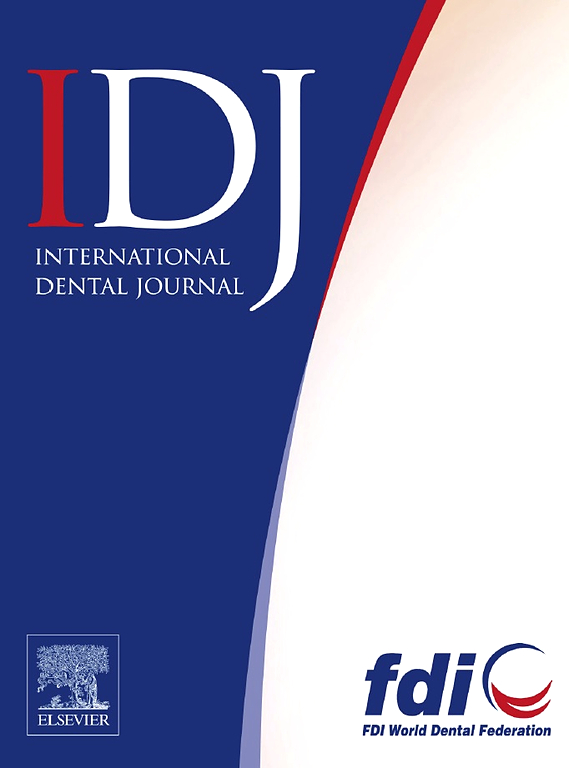基于多国问卷调查的牙科学生对深龋及牙髓外露处理知识的分析
IF 3.2
3区 医学
Q1 DENTISTRY, ORAL SURGERY & MEDICINE
引用次数: 0
摘要
本研究旨在评估来自10个国家10所牙科机构的牙髓学本科生和研究生对深部龋齿和暴露牙髓的管理知识,以及操作人员(材料、抗生素处方)和患者相关(年龄、症状)因素对其治疗方案的影响。方法通过在线问卷调查的方式,评估学生对4种临床情况下深部龋及牙髓外露的处理知识。使用简单的描述性统计来描述数据,并使用McNemar检验来确定情景之间的显着差异。p值设为5%。结果共有来自10所牙科院校的435名本科生和139名研究生参与调查。最终的调查包括401名本科生和127名研究生的回复,用于统计分析。当症状出现时,大多数本科生和研究生更倾向于非选择性(完全)除龋,而不是选择性(部分)除龋。大多数研究生在年轻患者中倾向于髓体部分切除,在老年患者中倾向于髓体切除和根管治疗(RCT)。大多数本科生在出现症状时都倾向于髓质切除术和随机对照试验。大多数本科生和研究生在处理暴露的牙髓时分别选择矿物三氧化物骨料和生物牙石。无论患者的年龄和症状如何,本科生和研究生都不推荐全身性抗生素。结论在所调查的方案中,大多数本科生和研究生倾向于:a)老年患者在有或无症状的情况下行髓质切除术和RCT;B)水合硅酸钙胶结剂作为纸浆封盖材料;c)不推荐全身性抗生素。临床相关性大多数学生在所有情况下都选择非选择性(完全)除龋,如果牙髓暴露,则使用水合硅酸钙胶合剂是首选材料。无论病人的年龄和症状如何,全身性抗生素被认为是不必要的。本文章由计算机程序翻译,如有差异,请以英文原文为准。
A Multi-National Questionnaire-Based Analysis of Dental Students’ Knowledge of the Management of Deep Caries and the Exposed Pulp
Introduction and aims
To evaluate knowledge regarding the management of deep carious lesions and exposed pulps among undergraduate and postgraduate endodontic students from ten dental institutions across ten countries, and the impact of operator (material, antibiotic prescription) and patient-related (age, symptoms) factors on their treatment protocols.
Methods
An online questionnaire was distributed to evaluate student knowledge of the management of deep caries and exposed pulp related to four clinical scenarios. Simple descriptive statistics were used to describe the data and McNemar tests were employed to identify significant differences between the scenarios. The P-value was set at 5%.
Results
A total of 435 undergraduates and 139 postgraduates from ten dental schools participated in this survey. The final survey included 401 responses from undergraduates and 127 from postgraduates for statistical analysis. When symptoms were present, the majority of undergraduate and postgraduate students preferred non-selective (complete) caries removal over selective (partial) caries removal in young patients. The majority of postgraduates preferred partial pulpotomy in younger patients and pulpectomy and root canal treatment (RCT) in older patients. The majority of undergraduates preferred pulpectomy and RCT in both young/old patients when symptoms were present. The majority of undergraduates and postgraduates opted for mineral trioxide aggregate and Biodentine, respectively, when treating the exposed pulp. Systemic antibiotics were not recommended by both undergraduates and postgraduates, regardless of the patient's age and symptoms.
Conclusion
Among the scenarios surveyed, the majority of undergraduates and postgraduates preferred: a) pulpectomy and RCT for older patients in the presence or absence of symptoms; b) hydraulic calcium silicate cements as pulp capping material; and c) did not recommend systemic antibiotics.
Clinical relevance
The majority of students choose non-selective (complete) caries removal in all cases and if the pulp is exposed, the use of hydraulic calcium silicate cements iwas the preferred material. Systemic antibiotics are considered unnecessary, irrespective of the patient's age and symptoms.
求助全文
通过发布文献求助,成功后即可免费获取论文全文。
去求助
来源期刊

International dental journal
医学-牙科与口腔外科
CiteScore
4.80
自引率
6.10%
发文量
159
审稿时长
63 days
期刊介绍:
The International Dental Journal features peer-reviewed, scientific articles relevant to international oral health issues, as well as practical, informative articles aimed at clinicians.
 求助内容:
求助内容: 应助结果提醒方式:
应助结果提醒方式:


